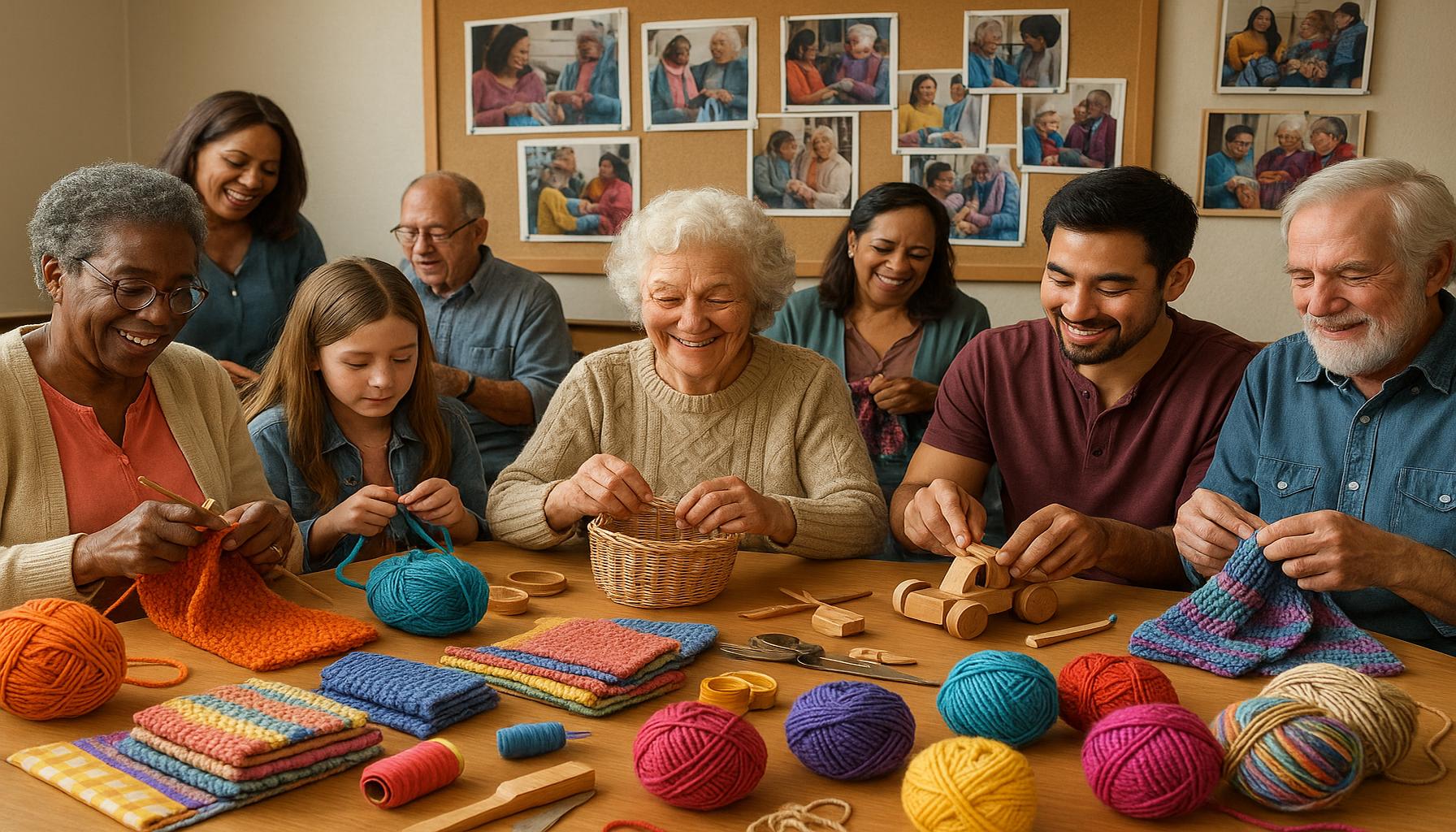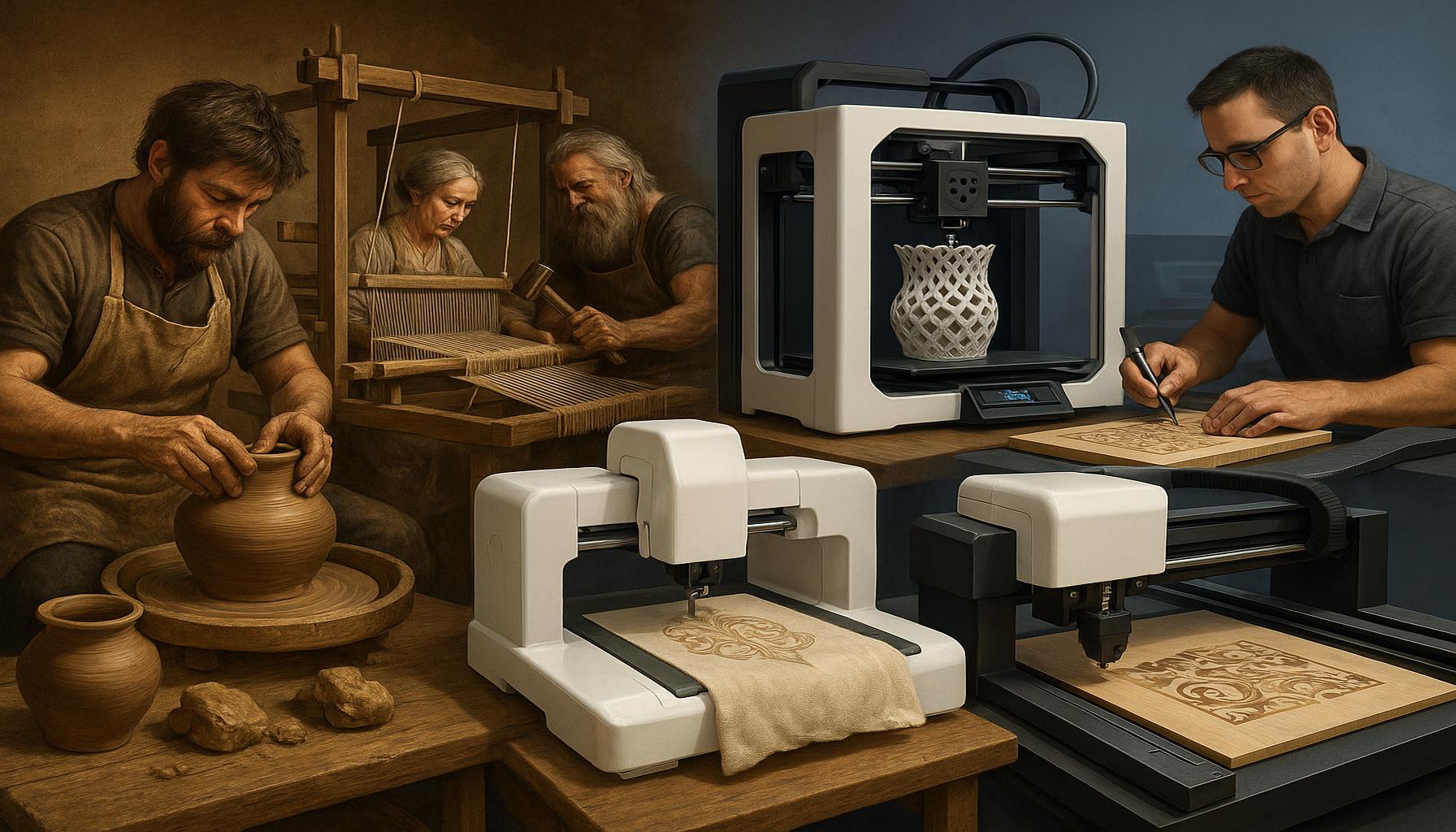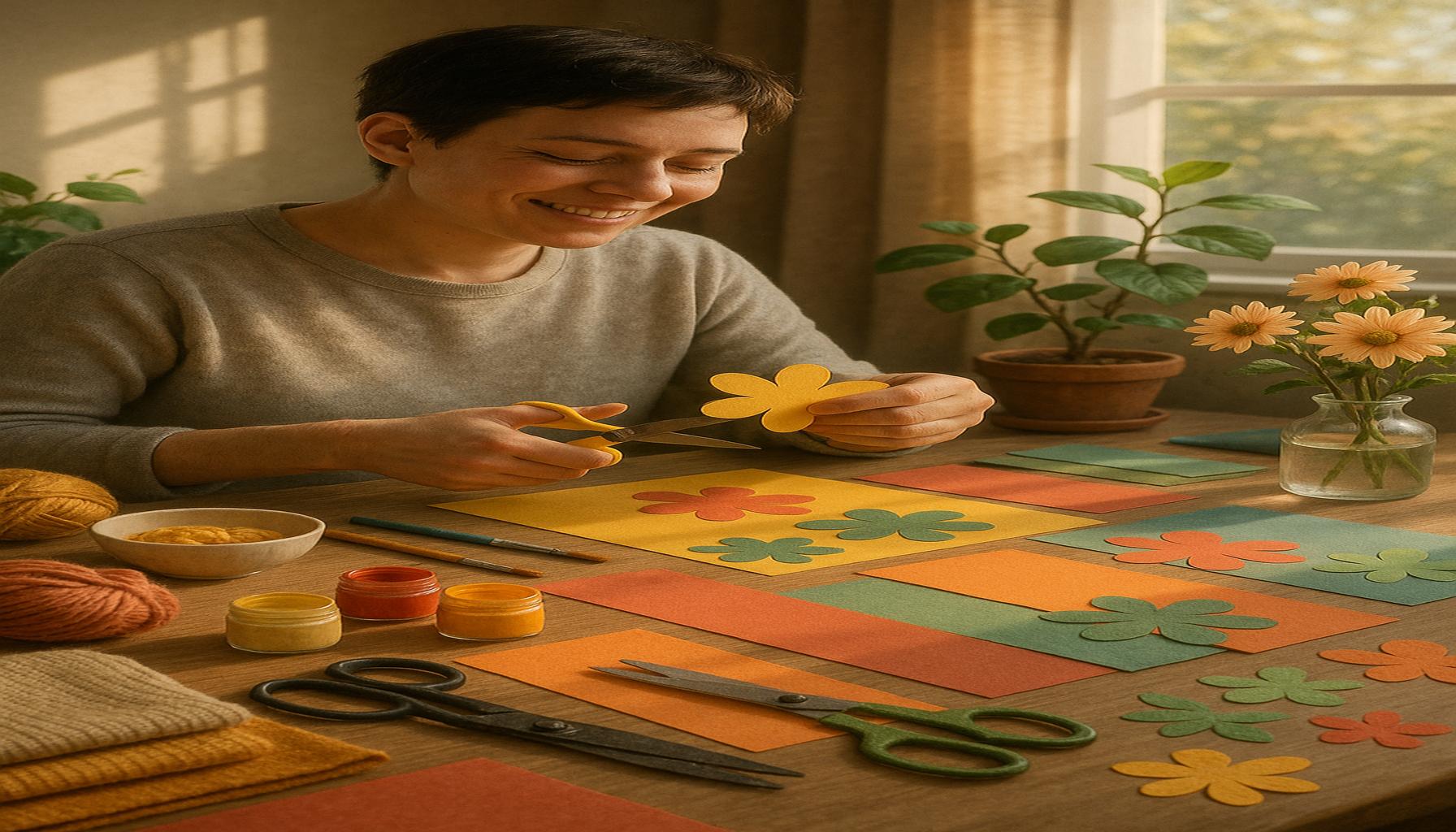Eco-Friendly Crafting Create Sustainable Art with Recycled Materials
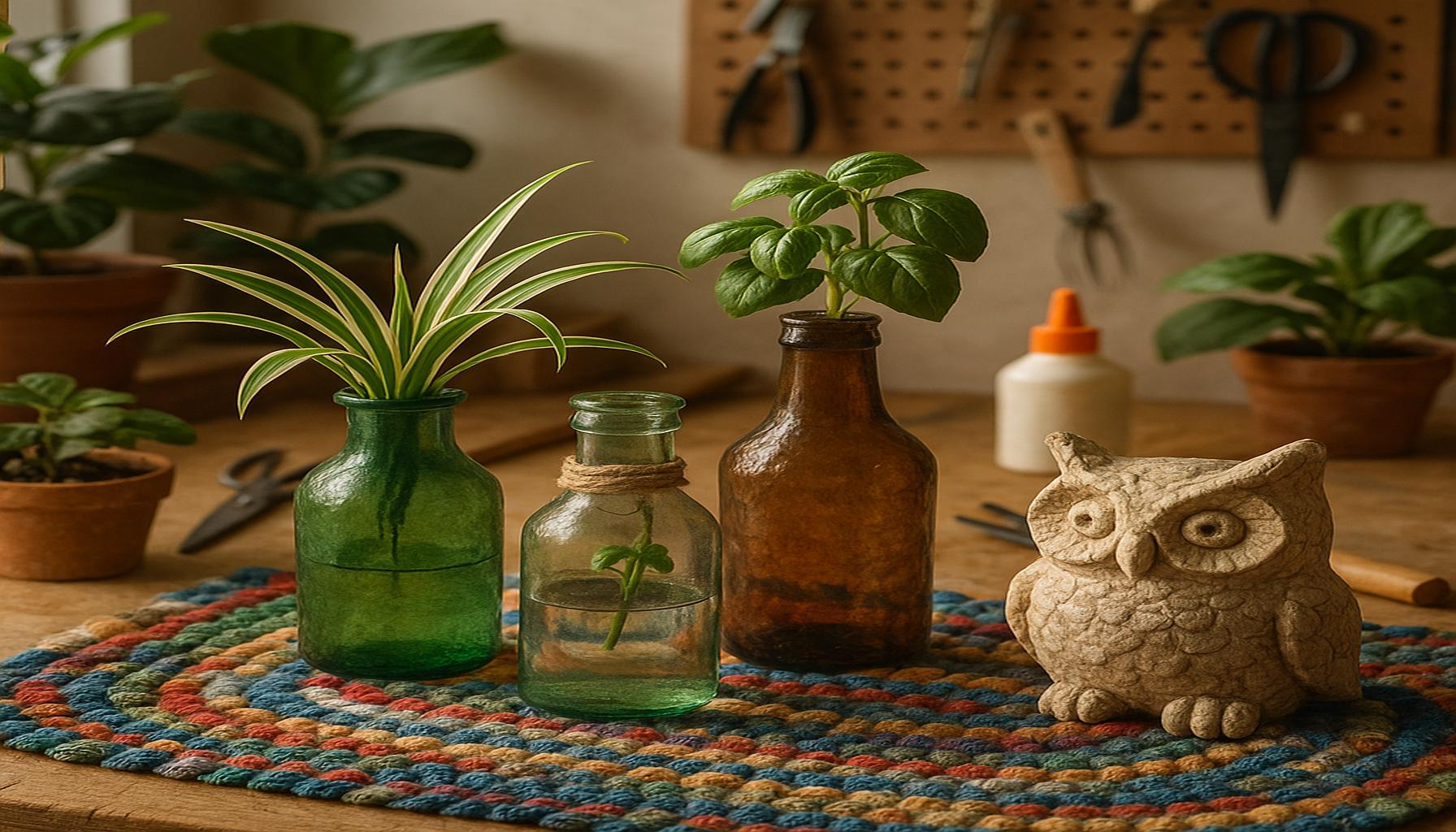
Crafting has evolved beyond simple creative expression; it now plays a crucial role in promoting environmental sustainability. By embracing eco-friendly practices, crafters can contribute to a healthier planet while exploring their artistic passions. Utilizing recycled materials and sustainable resources not only reduces waste but also inspires innovative designs.
In today’s world, where climate change and environmental degradation are pressing concerns, crafting with a conscience has never been more relevant. This shift towards sustainability in creative hobbies allows individuals to make a positive impact through their artistry. Whether you’re a seasoned crafter or a curious beginner, discovering eco-friendly materials can transform your approach to crafting.
Readers can look forward to exploring the Top 5 eco-friendly crafting ideas that utilize recycled and sustainable materials. From upcycled furniture to eco-art projects, these examples will ignite your creativity and motivate you to craft responsibly.
Top 5 Creative Hobbies for Sustainability in Crafting
In today’s world, where environmental awareness is more critical than ever, the integration of sustainability into everyday activities has become paramount. Crafting offers a unique opportunity to combine creativity with conscious environmental efforts. This article explores five creative hobbies that not only foster individual expression but also promote sustainability, encouraging makers to reduce waste, reuse materials, and rethink the resources they use.
5. Upcycled Furniture Projects
Imagine turning an old, battered table into a stunning centerpiece or transforming a worn-out chair into a chic accent piece. Upcycled furniture projects provide a platform for artistic innovation and environmental responsibility. By breathing new life into discarded furniture, you not only save money but also prevent these items from ending up in landfills, thus reducing environmental impact.
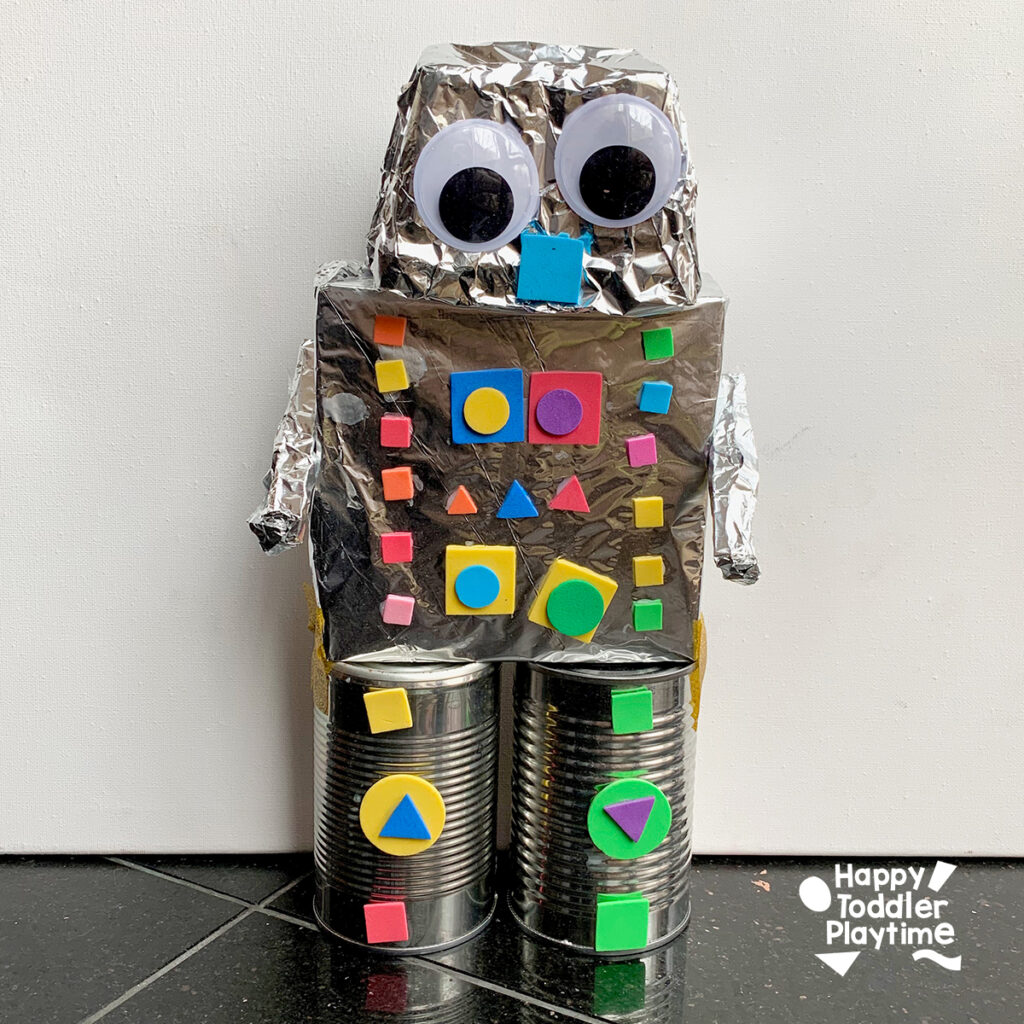
The charm of upcycled furniture lies in its ability to blend character with functionality. To ensure your creations are both stylish and durable, begin by assessing the structural soundness of each piece. Reinforce weak areas and opt for eco-friendly paints and stains to minimize chemical emissions. Furthermore, old fabric remnants can add a personal and eco-friendly touch to upholstery, turning an ordinary chair into a statement piece.
This method is not just about repurposing but also about celebrating the craftsmanship of the past while aligning it with today’s sustainability goals. Besides, the satisfaction of turning a dated relic into a modern marvel is immensely rewarding.
4. Eco-Friendly Gift Wrapping
Gift giving is a joyous occasion, often marred by the guilt of excessive waste. Traditional gift wrapping accounts for significant amounts of non-recyclable waste every year. However, with eco-friendly gift wrapping, you can minimize your environmental footprint while maintaining aesthetic appeal.
Embrace a creative challenge by using recycled materials such as old newspapers, maps, or leftover fabric scraps. These materials not only reduce waste but also provide a unique twist to your gifts. For instance, consider wrapping small presents in sturdy grocery bags, which can then be adorned with hand-drawn designs or stamps. Alternatively, cloth wrapping, utilizing natural dyes or printed motifs, elevates the gift’s presentation and is reusable, further emphasizing sustainability.
This approach not only delights recipients with its thoughtful presentation but also inspires them to consider sustainable practices in their own lives, creating a ripple effect of environmental consciousness.
3. DIY Natural Dyes
The art of dyeing with natural materials has existed for centuries, deeply rooted in cultural traditions across the globe. It is an intriguing and sustainable alternative to the chemical-laden synthetic dyes commonly used today. By experimenting with food scraps, plants, and flowers, crafters can create a spectrum of colors that are gentle on the environment.
The process of creating natural dyes can start right in your kitchen. Onion skins can yield a warm yellow, red cabbage a soothing blue, and beets or hibiscus flowers a vibrant red. The exploration of these materials holds the promise of not only obtaining exquisite hues but also deepening one’s connection to nature, fostering a more deliberate and immersive crafting experience.
Every creation becomes a testament to experimentation and personal expression. As you delve into natural dyeing, you cultivate a skill set that is environmentally friendly and steeped in history, encouraging a mindful approach to crafting.
2. Recycled Jewelry Making
Jewelry is often seen as a means of personal expression, and sustainable jewelry making elevates this expression with an added layer of environmental consciousness. By utilizing recycled materials, you create pieces that tell stories of transformation and renewal.
Start by collecting broken jewelry, metal scraps, and unique finds like buttons or bottle caps. These components can be creatively assembled into new designs, often yielding pieces that are both striking and conversation-worthy. The process also fosters a skill set in working with metal and design that could evolve into a rewarding career or lifelong hobby.
This practice not only reduces waste but also challenges conventional norms of beauty in jewelry design. Instead of sourcing new materials, you’re showcasing the potential of what’s already available, making a powerful statement about value and resourcefulness.
1. Crafting with Paper Waste
The abundance of paper waste offers a massive opportunity for creative reuse. With millions of tons generated each year, exploring crafting options with paper waste serves both as a meaningful hobby and a sustainability initiative.
Engage your artistic faculties by repurposing old magazines into intricate origami pieces or assembling scrap paper into expressive collages. Handmade cards, constructed from recycled materials, add a personal touch to celebrations and communicate a clear message of ecological stewardship.
Crafting with paper is not only versatile but also educational, demonstrating to others the beauty and utility found in what is often discarded. Whether you’re creating practical items or artistic masterpieces, this hobby challenges perceptions of waste, encouraging a broader conversation about sustainability in creative practices.
In conclusion, the journey of integrating sustainability into crafting extends beyond personal satisfaction, reaching into broader environmental impacts. These creative hobbies invite you to engage deeply with your materials and surroundings, offering a pathway to expressiveness that honors the planet. As you embark on projects from upcycling furniture to crafting with paper waste, you champion a cause greater than personal artistry and inspire others to join the movement towards a more sustainable future.
| Eco-Friendly Materials | Characteristics | Advantages | Potential Drawbacks | Ideal Users |
|---|---|---|---|---|
| Recycled Paper | Made from waste paper and is often free from harmful chemicals. | Reduces waste in landfills and offers various textures and colors for crafting. | May not be suitable for high-durability projects. | Artists looking for sustainable yet affordable materials. |
| Natural Dyes | Extracted from plants, minerals, and insects, offering a spectrum of colors. | Non-toxic and more environmentally friendly compared to synthetic dyes. | Color consistency may vary; colorfastness can be an issue. | Crafters interested in traditional and ecological methods. |
| Upcycled Fabrics | Includes clothing and textiles that are repurposed into new products. | Supports zero waste initiatives and allows for unique designs. | Availability can be inconsistent; quality may vary. | Fashion designers and home crafters looking for unique materials. |
| Biodegradable Glues | Made from natural sources, ensuring they break down over time. | Less impact on the environment as they decompose naturally. | May not be as strong as conventional adhesives. | Crafters who prioritize eco-friendly practices in their projects. |
Exploring the world of crafting with **eco-friendly materials** not only enhances creativity but also cultivates a passion for sustainability. The use of **recycled paper** offers enticing advantages by transforming waste into functional art, exemplifying resourcefulness. Artists and crafters can create exquisite pieces while significantly contributing to waste reduction.Similarly, **natural dyes** enrich the crafting experience by connecting artisans with nature. Utilizing these dyes opens up an endless palette, allowing creators to explore diverse color options while adhering to eco-conscious practices. However, it is essential to acknowledge that crafting with natural materials might present challenges such as color consistency and durability.The introduction of **upcycled fabrics** contributes a unique dimension to the craft world. These materials inherently tell stories, reflecting the journey from one life to another as they are reborn into new creations. This aspect appeals particularly to designers and crafters passionate about individuality and style, encouraging consumers to rethink their purchasing habits.Lastly, the selection of **biodegradable glues** signifies progress towards minimizing environmental consequences. Offering an alternative to conventional adhesives, these products facilitate efficient crafting without the concern of lasting pollution. However, crafters should be aware that they may not match the strength of synthetic options.Engagement in eco-friendly crafting fosters a deeper understanding of materials and sustainability, inspiring more people to partake in creating art that echoes responsibility and creativity. Whether you’re a seasoned artist or a novice, the transition to these sustainable materials can pave the way for an innovative crafting journey.
FAQ: Sustainability in Crafting
What are the benefits of using recycled materials in crafting?
Using recycled materials significantly reduces environmental impact. By repurposing items that would otherwise contribute to landfill waste, you are actively participating in resource conservation. Moreover, crafting with recycled materials often spurs creativity, as it challenges you to think outside the box and come up with innovative uses for discarded items. This practice not only fosters a sustainable mindset but can also result in unique and original pieces that might not be achievable with new materials.
How can I ensure my crafting materials are truly eco-friendly?
To confirm that your materials are genuinely eco-friendly, start by researching their origins. Materials marked with certifications such as the Global Organic Textile Standard (GOTS) or the Forest Stewardship Council (FSC) are generally reliable. Furthermore, locally sourced materials typically have a lower carbon footprint due to reduced transportation. Investigate each material’s lifecycle and recycling potential; sustainable crafting involves considering the entire lifecycle of the product from production to disposal.
What are some common recycled materials used in crafting?
Common materials include paper, cardboard, glass, plastic, and fabric scraps, among others. For instance, old newspapers can be transformed into papier-mâché, and glass jars can morph into stylish vases or storage containers. Plastic bottles are versatile and can be cut and adapted into various functional items such as plant holders. Each of these materials provides an opportunity to reduce waste and explore creative crafting techniques.
Are there online communities or resources dedicated to sustainable crafting?
Yes, there are numerous online communities and platforms focused on sustainable crafting. Websites like Etsy have dedicated sections for eco-friendly products and materials, while forums and social media groups actively discuss tips and projects involving recycled craft materials. Additionally, websites such as Sustainable Crafting Network and Eco-Crafter’s Blog offer tutorials, ideas, and support for enthusiasts eager to expand their eco-friendly crafting skills.
Is crafting with recycled materials more cost-effective than using new materials?
In many cases, using recycled materials is indeed more cost-effective, as these materials are often accessible for free or at a lower cost than new ones. Thrift stores, garage sales, and community swaps are excellent sources for finding inexpensive crafting supplies. While the initial effort to source these materials may be higher, the savings can be substantial, alongside the added benefit of minimizing environmental impact. Crafting with recycled materials can transform the way you view consumption and sustainability, leading to a more conscious crafting practice.
Conclusion
As we conclude our exploration into the world of sustainable crafting, it’s evident that the pursuit of creating art from recycled and eco-friendly materials holds significant potential not only for the preservation of our planet but also for fostering creativity in unparalleled ways. The journey of crafting with sustainability at its core has vividly demonstrated how art and environmental responsibility can harmoniously coexist.
Throughout this article, we’ve uncovered how sustainable crafting serves as a dynamic method to reduce waste, turning what might be discarded into unique artistic expressions. The emphasis on using recycled materials transforms common items destined for landfills into works of art, providing both hobbyists and artisans a new avenue for creativity. This practice not only benefits the environment but also enables crafters to develop innovative techniques as they work with varied and often challenging materials.
Moreover, embracing eco-friendly materials, such as organic fibers, responsibly-sourced wood, and plant-based dyes, further establishes crafting as a conscientious endeavor. This approach not only supports sustainable practices but also educates and inspires communities to consider the environmental impact of their hobbies. As more individuals turn to sustainable crafting, a ripple effect can encourage industries to further champion eco-friendly manufacturing and sustainable consumption.
In essence, sustainable crafting is about more than just the end product; it is about adopting a mindset that champions resourcefulness and stewardship. Artists and hobbyists alike can find joy in the challenge of crafting with a conscience, continually pushing the boundaries of creativity while making a positive impact on the environment. As this movement gains momentum, it offers a promising vision for the future, where creativity and sustainability are beautifully interwoven, paving the way for a cleaner, greener world.
